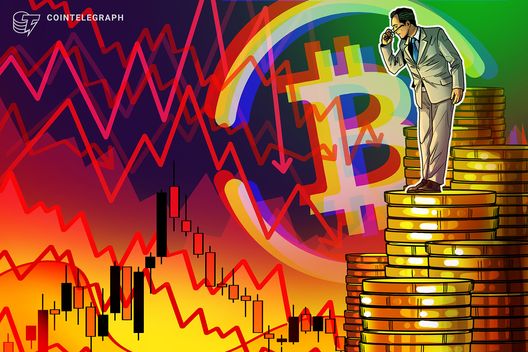ARTICLE AD BOX

- 10,000 BTC dormant for 14 years were moved, potentially the largest long-term holder transfer ever recorded.
- Analyst warns not to assume bearish intent without understanding the full transaction context and purpose.
Today, the crypto world was shocked by the movement of 10,000 BTC that had not moved for 14 years. Not a new wallet, nor a rotation between internal addresses. According to on-chain analyst Mignolet of CryptoQuant, this movement looks like a real transfer with the intention of being traded. What does that mean? It could be that a big player is preparing a big move.
 Source: CryptoQuant
Source: CryptoQuantA Massive Shift, But Is It Really Time to Panic?
If this is indeed a transfer to sell, this would be the largest movement by a long-term holder ever recorded. Previously, a similar record was set when 3,700 BTC changed hands after the FTX crash—a phase that was later considered the market bottom at the time. But does today’s event mean that the market will collapse again? Not necessarily.
Mignolet warned that many people are too quick to jump to conclusions. Just looking at the raw data movement, then immediately panic. In fact, there is no certainty whether this transfer is intended to be sold, or just to secure assets as was done in the case of Mt. Gox. It could be that this is just a change of wallet for security reasons, but well… it could also be not. At this point, there is no definite answer.
Mixed BTC Signals: Selling Pressure Meets Accumulation
What is clear is that this is not a normal movement. In the on-chain world, traces like this always leave an effect. It can be upwards, or vice versa. Interestingly, this incident occurred at the same time as another anomaly that we highlighted: the whale behavior in late June. At that time, there were two extreme sides running simultaneously—some whales were seen realizing profits, while others were capitulating.
Then, recently, CNF also covered that the funding rate for Bitcoin futures had turned negative. This means that traders who take short positions now have to pay long positions to maintain their contracts. This usually occurs when market sentiment worsens.
But if negative funding continues, there could be a sudden price spike. Why? Because too many short positions are at risk of being squeezed—and they have to rush to buy back to cover their losses. This phenomenon is often called a short squeeze.
Furthermore, there is interesting data from the Finbold H1 2025 report that can provide additional context. In the first half of 2025, the number of wallets containing assets of more than one million dollars increased by 26,758 new wallets. The majority were formed in the second quarter, when BTC accumulation soared.
So, on the one hand, there is indeed selling pressure, but on the other hand, it is clear that many are still accumulating large amounts of Bitcoin.
This situation makes the direction of the market even more difficult to predict. On the one hand, on-chain shows potential pressure. On the other hand, accumulation data and market structure show resilience. Now, if you are in the position of a trader now, the question is simple: do you follow the panic flow, or are you preparing to seize the opportunity?
Mignolet himself has not yet given a definite conclusion, but he said that this on-chain trail has the potential to trigger new volatility in the near future.
Besides that, as of the writing time, BTC is swapping hands at about $108,408.84, up 1.36% over the last 7 days, with $43.52 billion in daily trading volume.
.png)
 4 months ago
8
4 months ago
8








 English (US)
English (US)